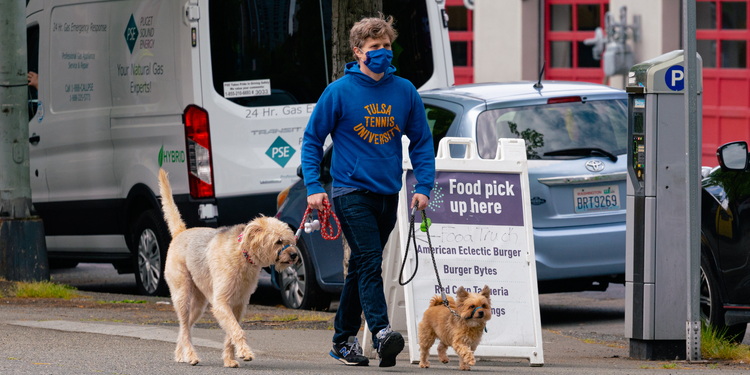Where are you travelling to?
Today, with travel restrictions and border closures in many countries, thousands of dogs and cats are stranded abroad, many of them without their owner. Sad as it may sound, you will agree that travelling with a pet currently, whether you're moving overseas or going back home, involves significant risks and costs. Thus, many owners have been compelled either to stay longer in their host country until they find a viable solution or to abandon their four-legged companion.
What are the current restrictions to pet travel around the world? The Philippines, for example, haven't yet authorised pet travel. In Europe, third-country nationals are not allowed to bring their pets, while for EU citizens, only certain airlines are providing flights for cats and dogs to major airports. In China, seats are limited on most flights.
In the United Arab Emirates, expats coming with pets must be in possession of an Annex signed by an accredited veterinarian, certifying that the animal has not been in contact with any COVID-19-infected person or animal before travelling. Also, dogs and cats from many countries have to be quarantined for 14 days before travelling. In the USA, while pets are allowed, some airlines are not accepting them on board until further notice. In Canada, only Canadian passport holders and essential workers are allowed to bring their pets.
While pet import hasn't changed in Australia, cats and dogs are only allowed to enter the country through Melbourne Airport to be transferred to quarantine in Mickleham. Pets cannot be transferred from one airport to another by flight. Also, where local authorities have not been informed of the arrival of a pet and if the latter doesn't have the necessary permit and certificate, it will be sent back to its home country.
Tips for planning your pet's trip
As mentioned above, there might be strict regulations for pets travelling to certain countries. So first of all, chose the best means of transport according to your destination and your pet's needs. If you're travelling by air, inquire with your carrier about the conditions to be met and the documents required besides the usual health certificate and rabies vaccination. Make sure you have booked your flight early enough so that you can both arrive together in your host or home country. Also, pay attention to how the situation evolves so that you can determine when is the best time to travel.
If you are in Europe, for example, and you can't find a flight, travelling by car or by train can be an option. However, make sure to inquire whether trains are accepting pets on board during the crisis. Having a plan B can also help if there's a new surge in your host country and you have to fly back home urgently. Will you be able to take your best friend back with you? However, most repatriation flights are currently not accepting pets. So you might as well travel to a neighbouring country so that coming back home is easier in case things don't work out as planned.
How to protect your pets during the COVID-19 crisis
A few isolated cases of contamination by dogs and cats have been reported in certain countries, notably in Belgium and Hong Kong. Does this mean that your pet cannot travel? Of course not. Still, non-essential travel is not recommended. But if you absolutely have to go abroad and don't have anyone to entrust your best friend to, or you simply don't want to part with him, you're advised to take the necessary precautions. For example, observe social distancing as soon as you land in your host country, even if your dog or cat is unlikely to be contaminated by an infected person.
In case you're quarantined upon your arrival, avoid any contact with your pet. If you're required to self-isolate, make sure to keep an eye on your pet once you're home. The good news is that canine coronavirus is completely different from what is transmitted among humans. Diarrhoea is the main symptom, and you'll be happy to know that a vaccine exists!
When you're finally out of quarantine or isolation, inquire about the situation in your neighbourhood or city. When possible, avoid COVID-19 clusters, as well as public places where people are likely to gather. Also, don't allow your pet to be in contact with other dogs and cats. When you go out sightseeing, check whether there are any pet restrictions in the places you're looking to visit. Also, in most bars and restaurants, the number of people allowed is limited. Consider inquiring with the manager and booking.
There are plenty of ways that your pet can travel with you abroad or back home. If you have any doubts, seek advice from pet travel experts or ask your questions on Expat.com forums.
















